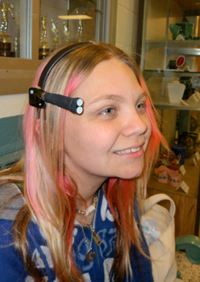 Exposure to Early Evening Sunlight in Spring Delays Sleep Times
Exposure to Early Evening Sunlight in Spring Delays Sleep Times
In the spring, later sunset and extended daylight exposure delay bedtimes in teenagers. Biologically, this increased exposure to early evening light in the spring delays the onset of nocturnal melatonin, a hormone that indicates to the body when it’s nighttime. This extended exposure adds to the difficulties teens have falling asleep at a reasonable hour.
Over time when coupled with having to rise early for school, this delay in sleep onset may lead to teen sleep deprivation and mood changes, and increase risk of obesity and perhaps under-performance in school.
In addition to the exposure to more evening daylight, many teens also contend with not getting enough morning light to stimulate the body’s biological system, also delaying teens’ bedtimes.
Study Results
In the study, eighth-grade students from Algonquin Middle School in upstate New York were exposed to significantly more “circadian light” in the early evening during spring than in winter, resulting in both delayed melatonin onset and shorter self-reported sleep durations. Each subject wore a Daysimeter, a small, head-mounted device developed by the LRC to measure an individual’s exposure to daily “circadian light,” as well as rest and activity patterns. The definition of circadian light is based upon the potential for light to suppress melatonin synthesis at night, as opposed to measuring light in terms of how it stimulates the visual system.
Sixteen students experienced a delay in melatonin onsetby an average of 20 minutes measured in one day in spring relative to one day in winter. Melatonin levels normally start rising two to three hours prior to a person falling asleep. The students also kept sleep logs as part of the study, which collectively showed a 16-minute average delay in reported sleep onset and a 15-minute average reduction in reported sleep duration measured in one day in spring relative to one day in winter.
The results of the Algonquin Middle School study demonstrated that it was the extended daylight hours due to the seasonal change, not evening electric lighting after dark in the home, that had the biggest impact on delayed sleeping patterns. These results underscore the importance of measuring the 24-hour circadian light and dark patterns in order to draw valid inferences from field studies of this kind.
Publications
Figueiro M and Rea MS. 2010. Evening Daylight May Cause Adolescents to Sleep Less in Spring than in Winter. Chronobiology International. 27(6): 1242-1258.
Link to the press release.
Link to the first part of this study, "Quantifying the impact of light on K-12 students' performance and well-being."
Sponsors
U.S. Green Building Council (USGBC) and (in part) Trans-National Institutes of Health Genes, Environment and Health Initiative (NIH-GEI).
To read more, search for related articles, or view a bibliography of published articles, click here.



